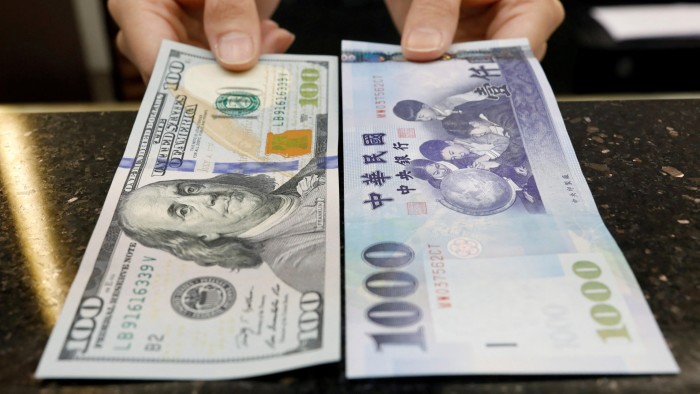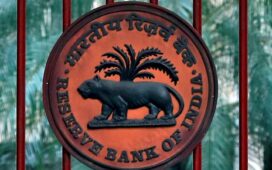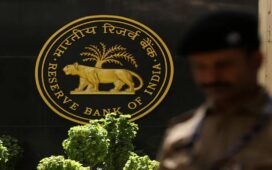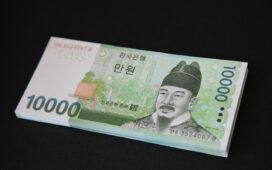Bets that currency deals will form part of trade negotiations with the US have helped lift a string of Asian currencies against the dollar, as traders look for signs that countries will offer to scale back intervention to appease President Donald Trump.
The Korean won, Japanese yen and Taiwan dollar have rallied strongly in recent weeks, making them Asia’s top-performing currencies this year, in the expectation that talks on lowering sweeping US trade tariffs will touch on how countries manage their dollar exchange rates.
“It is quite likely that the market believes that the US will look to introduce some language around exchange rates, as part of broader trade agreements with some trading partners,” said Nathan Venkat Swami, head of Asia-Pacific FX trading at Citigroup.
“Exchange rates will be part of negotiations,” said one investor at a large Chinese fund. “The market will front-run before the negotiations play out.”
The large US dollar reserves of wealthy Asian exporting nations such as Taiwan, Korea and Japan have fed the speculation.
“There’s a bit of a coiled spring” in Asian currencies, said Timothy Moe, co-head of Asia macro research at Goldman Sachs. “The conditions are at hand for a currency appreciation.”
Many traders and analysts believe a so-called Mar-a-Lago Accord — a grand multilateral currency deal in the style of the 1985 Plaza Accord, when Washington negotiated a depreciation of the dollar with Japan, the UK, France and West Germany — is unlikely.
Instead, they say the market is moving in the expectation that a series of smaller, bilateral currency deals could be simpler to strike. It will “probably be easier to get to bilateral agreements than a single multilateral one”, said Meera Chandan, JPMorgan’s co-head of FX strategy.

Last week, the won surged as much as 2.2 per cent against the dollar on reports, later confirmed by South Korea, that it had discussed exchange rates with the US in early May.
The move in the won followed a historic surge in the Taiwan dollar earlier in the month, partly fuelled by speculation that US trade talks would drive the currency higher. The surprise lack of intervention by the Taiwan’s central bank was seen by the market as a sign of a shift in policy towards allowing the currency to appreciate.
The recent jump in the Taiwan dollar was a signal from the central bank to the market “that a regime change is coming”, said one portfolio manager in Hong Kong.
Taiwan’s central bank said at the time that the US Treasury department had not asked for currency appreciation as part of negotiations.
Nevertheless, a growing number of analysts think the US could make limited currency intervention a condition of trade deals.
“At this stage, I’d expect any FX deal to be along the lines of commitment to freely floating exchange rates and limiting FX intervention, particularly intervention to sell the local currency,” said ING’s global head of markets research Chris Turner.
Foreign exchange traders from the region are adjusting positions on expectations that appreciation of local currencies is a long-term trend.
“I think the appreciation will not be a vertical line like what happened earlier in May,” said one treasurer at a large Taiwanese life insurer who works in FX. “But we do agree that the appreciation move is a trend.”
On Wednesday, when asked by lawmakers about the sharp appreciation, Taiwan’s central bank deputy governor Yen Tzung-ta said managing exchange rate volatility was the prime concern.
Traders in the region see the shape of any trade deal that Japan strikes with the US as key to determining what happens to other currencies in the region,” said a portfolio manager in Hong Kong. “This will have a “knock-on effect on other Asian currencies.”
According to investors and analysts, the yen and renminbi anchor regional exchange rates.
Japan’s trade negotiations with the US have been delayed as Prime Minister Shigeru Ishiba’s deeply unpopular administration holds out for a complete exemption from tariffs in an attempt to win over voters ahead of elections in July.
As most analysts predicted, a meeting between US Treasury secretary Scott Bessent and Japanese finance minister Katsunobu Kato on the sidelines of the G7 finance meeting in Canada on Wednesday resulted in no formal agreement on currency actions.
However, there was an unusually clear affirmation in a statement from the US Treasury that exchange rates should be determined by the market and that the current dollar-yen rate reflected fundamentals.
At a press conference, Kato said neither exchange rate levels nor Japan’s massive holdings of US Treasuries were discussed.
Ahead of the meeting, analysts in Tokyo speculated that conditions were in place for what Nomura’s chief FX strategist Yujiro Goto called a “hidden deal”.
Despite being the first country to open formal tariff negotiations with Trump, Japan’s efforts to reduce a 25 per cent levy on automobiles have yet to produce a result. But the US may now agree to a lowering to 10 per cent, said Goto, on the tacit understanding that Tokyo will not stand in the way of the yen rising between 3 and 5 per cent against the US dollar.
The yen would rise naturally, said Goto, if the Bank of Japan stuck to its efforts to raise interest rates, and if the Japanese government held off any verbal intervention whenever the yen rose sharply.
As for the renminbi, Goldman Sachs now forecasts it will appreciate to Rmb7 to the dollar over the next 12 months, from Rmb7.20 currently.
“The situation is favourable for the market to allow a gradual appreciation of the renminbi,” said Goldman’s Moe. “That could open the door for other currencies like the yen, won and Taiwan dollar to appreciate further.”
Additional reporting by Haohsiang Ko in Hong Kong





